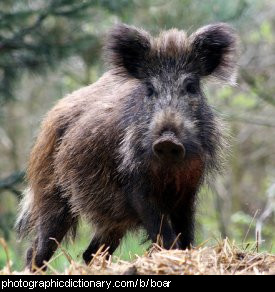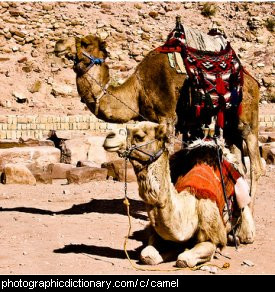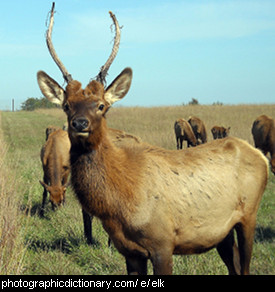Scientific name: sus scrofa
Wild boars are the wild ancestors of today's domestic pigs. They are originally from Europe, the Mediterranean and most of Asia. Wild boar were hunted to extinction hundreds of years ago in Britain but are still common in France and Spain.
Scientific name: syncerus caffer
The African buffalo is a type of large cow. It has a bad temperament and has never been domesticated. There are still large herds of buffalo throughout Africa.
Scientific name: Dromedary: camelus dromedarius
Camels are a large animal that is very well adapted for hot, dry weather. They can survive longer without water than any other animal. Camels have a big, fatty hump on their backs that stores food for times when they can't find enough to eat. They are taller than an adult man and are used to ride on or to pull carts.
There are two types of camel, dromedary camels like in the picture that only have one hump, and the bactrian which has two. There are a lot more dromedaries than bactrians in the world.
Camels are related to llamas and alpacas.
Scientific name: rangifer tarandus
A caribou, otherwise known as a reindeer, is a type of deer from the cold, northern regions of the world.
Video: view
Elephants are the largest land animals on earth (whales are the largest animal, but they live in the sea). They can live for 70 years. There are two different kinds of elephant, African and Asian (or Indian) elephants. African elephants are larger and have bigger ears. The elephant in the picture is an African elephant.
Scientific name: cervus canadensis
Video: view
Scientific name: family: canidae


















